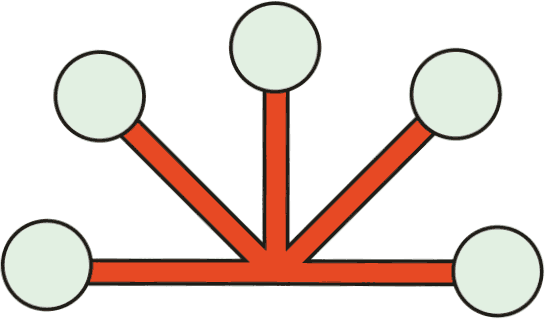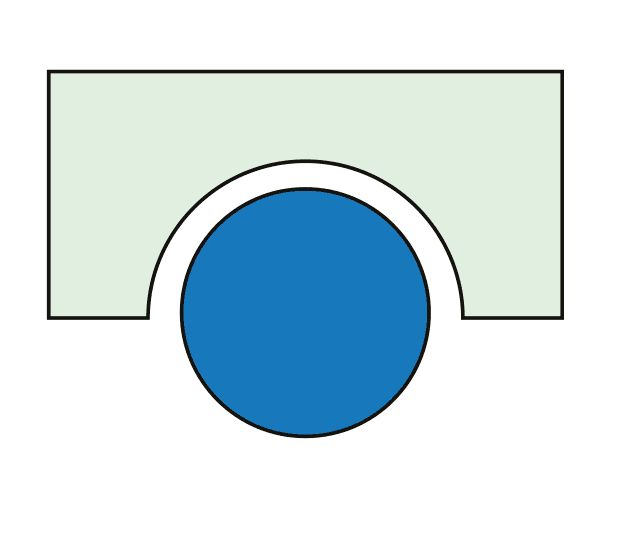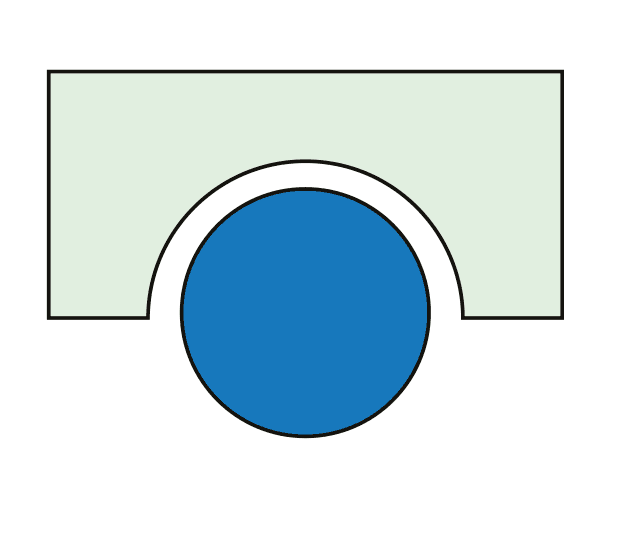The Team Connections Issue
Bringing the team together outside of the work they do
Not sure where to start? This guide can help.
The way people connect outside of the work they do is one of the most critical drivers of culture. Consider this the “primordial ooze” of your company; the environment you create for the work to happen in, that has nothing to do with the work itself. This is your opportunity to help your team build deeper, more trusting, relationships without any stakes attached; no deadlines, no docs, no reviews, no specs, just people.
When you do connect your people, do it with purpose and personality. Don’t just give your employees the same t-shirt you give your users. Give them one with a special design or color that you can only get if you have the distinct honor of being an employee. Don’t just call your conference rooms Conference Room 1 and Conference Room 2. Have your whole company vote on what they should be named after; animals? authors? artists? Reveal the names in ceremonious fashion at an All Hands or team meal.
This is your chance to show some company personality and panache. Do the things only your team, with your mission, and your users, and your tastes, would do. The more specific these spaces and moments of connection are, the more meaningful they will be to those who experience them.
This issue will give you ideas for how to connect your employees in a way that both reinforces your values and makes your employees feel closer to one another outside of the work they do together.
Other issues
Not sure where to start? Select one or more tags below to filter the content of this zine:
Looking for:
- Nuts and Bolts
- Wrenches and Hammers
- Factory Favorites
- Recipe Under Development
Kool-Aid Serving Size:
- Kool-Aid Gulp
- Kool-Aid Sip
My role:
- Company Leader
- Crossfunctional Influencer
- Domain Expert / Team Lead
- Operator
Get more details on zine filters here
Filter descriptions
Looking for:
-
Nuts and Bolts
Foundational mechanisms to get started with. Most great organizations rely on their own version of this.
-
Wrenches and Hammers
Supplemental mechanisms to do more with. Many great organizations use these to close gaps or respond to challenges.
-
Factory Favorites
Lesser-utilized tactics that more companies could benefit from trying.
-
Recipe Under Development
Research on best practices and potential impact is still underway.
Kool-Aid Serving Size:
-
Kool-Aid Gulp
The highest-impact, furthest-reaching tactics for everyone to engage with.
-
Kool-Aid Sip
Nice-to-have or opt-in tactics for smaller groups to experiment with.
My role:
-
Company Leader
Someone with direct influence over the direction of the company and what is brought onto the company stage.
-
Crossfunctional Influencer
Someone who makes decisions across multiple teams or functional groups.
-
Domain Expert/Team Lead
Someone with strong command of a specific topic and/or the leader of a functional group.
-
Operator
Anyone getting work done with a command of the company’s values/standards and the inclination uphold them.
GATHERING
“Why are you having a neighborhood potluck? Because we like potlucks, and we have one every year. Why do you have one every year? Because we like to get our neighbors together at the beginning of the summer. Why do you like to get your neighbors together at the beginning of the summer? I guess, if you really think about it, it’s a way of marking the time and reconnecting after the hectic school year. Aha. And why is that important? Because when we have more time in the summer to be together, it’s when we remember what community is, and it helps us forge the bonds that make this a great place to live. Aha. And safer. Aha. And a place that embodies the values we want our children to grow up with, like that strangers aren’t scary. Aha. Now we’re getting somewhere.” –Priya Parker, The Art of Gathering
The opportunity you have with gatherings that you may not have with other tactics is that they can be completely immersive- they can look and smell and maybe even taste like something. And people remember how they feel more than what happened. By taking great care in the details, and coming together over a clear purpose, you can create some really meaningful memories and connections for your team.
Getting people to hang
Encouraging employees to spend non-work-focused time together
- Do at least a little more than a budget for coffees and happy hours for individual teams. But, don’t make it so high-effort that people aren’t inclined to take advantage of it.
HOT TIPS
- The IDEO team did tea once a week. Team members were encouraged to bake their own snacks and share them over tea. When the week coincided with a cultural holiday, snacks reflected the cuisine of that region.
- At Stripe, a couple tables in the kitchen were reserved for people who were seeking colleagues to eat with. It helped maintain the culture of “sitting down next to anyone” at mealtime as the company grew.
- Figma had a ‘crafts room’ that was filled with arts and crafts supplies (paper, paints, markers, etc.) to help people create and collaborate together, in a different medium.
COMPANY STORY
Space to teach each other
Cultivating a culture of teaching and learning from each other
- These can, but don’t have to be, knowledge or skills specifically related to the work the company does. No matter what the subject, teaching and learning from each other can build a strong foundation of trust, care, and respect that will seep into regular work.
- Lunch and Learns are a popular format for these. At some set cadence, one team member presents on something they know a lot about with anyone who wants to join.
- Instead of offering a stipend to your employees for taking a class at General Assembly, try having someone at your company run a class. Can someone on your Analytics team teach a SQL 101 class? Can someone on your engineering team teach an intro to coding class? Can someone on your design team teach an intro to design/CSS?
- Slack channels “run” by people with expertise in a functional (work or non-work related) area can also be a great opportunity for teaching. Does one of your employees have a particularly green thumb? Encourage them to create a #plants-AMA Slack channel for people to bring their gardening questions.
HOT TIPS
- Figma has “Tech Talks” every week, where someone at the company does a 20-30 minute deep-dive on something they know a lot about. The “Tech” is a loose constraint; talks have ranged from book binding to the principles behind motion graphics to keyboard construction to the game mechanics of PacMan.
- Figma had an S-1 reading group where team members that were also angel investors would walk people through how they interpreted S-1’s.
- Stripe had an internally-facing blog where employees would share learnings and interesting tidbits with the rest of the company.
COMPANY STORY
Company meetup
Creating magic by getting all of your employees together
- Most companies that do this do it on an annual cadence.
- The goals should be part getting on the same page, part company pep rally, part working together, and part increasing the likelihood for serendipitous connections. This is a rare chance for everyone at your company to be in the same room (virtual or IRL), with the same mindset.
HOT TIPS
- Basecamp (a fully remote company) has all-company gatherings twice per year. Each day begins with a team breakfast at 8am and the rest of the day is filled with a lightly-scheduled day of quality time and talks.
- Twilio does an annual conference called “Gather” where all global employees convene to hang out and get pumped for the following year. It’s tradition to start with a day of service in the local community.
COMPANY STORY
Download the workbook for guiding questions on bringing this to life at your company.
TEMPLATE
Office Space
Making your space represent and inspire you
- This applies to the design of the space and the things in it. The latter is much easier (and cheaper) to make edits to.
- Serendipitous encounters and information osmosis are more likely to occur between people that sit near each other. Consider rotating desks often so that employees are sitting next to new people all the time.
HOT TIPS
- Stripe loves reading. When it came time to decorate the office, employees were sent out to local bookstores to buy their favorite books to fill the shelves with.
- Airbnb conference rooms are designed after popular listings. One conference room might have the trappings of a bungalow in Hawaii while the one next door might have the chic decor of a Parisian apartment.
- For some time, Airbnb employees didn’t have assigned desks (though they did have lockers to keep their stuff). The culture of team members sitting anywhere helped increase chance encounters between employees.
- Superhuman names their conference rooms after chapters in the founder’s favorite book, The Art of Game Design, to reinforce their focus on game design.
- Painted on the wall of Apple’s Marketing Building, M-3, is a message in silver letters: simplify, simplify, simplify. It’s a clever jab at Henry David Thoreau’s famous quote, “Our life is frittered away by detail. Simplify, simplify, simplify!”
- Amazon’s main building on campus is named “Day 1” after their operating principle aimed to remind everyone that it’s still early days for the company.
- Many companies name their conference rooms after things that reflect their culture. Stripe, a company that loves celebrating science, named one floor of conference rooms after famous inventions (like the Tesla Coil or Telescope) and decorated the rooms with pictures of those inventions or toylike artifacts of them. Give Directly names their conference rooms after philanthropic successes.
COMPANY STORY
Music
The soundtrack to your company
There’s more I’d like to learn before I make any suggestions. If you have any stories, learnings or best practices you’d like to see included, I hope you’ll leave a comment.
IDEA KINDLING
Food
Feeding your employees (or not)
There’s more I’d like to learn before I make any suggestions. If you have any stories, learnings or best practices you’d like to see included, I hope you’ll leave a comment.
IDEA KINDLING
Inviting inspiration In
Bringing in outside perspectives that our company can benefit from hearing
- Things in tech can get a little navalgaze-y. By creating explicit norms and forums for sharing outside inspiration, your team will be encouraged to look to the outside world more often.
- Start an inspiration channel in Slack or email where people can post things they see out in the world. This is a way to spotlight what great looks like.
- One place to start is by finding great thinkers, on any topic, even those not explicitly relevant to the company’s work. It’s also a great way for leaders to show their team who they are inspired by or take advice from.
- When inviting speakers on a particular topic, consider doing a meal before or after with a smaller group that would really appreciate it and benefit from a hearing from this person in a smaller conversational forum.
- Try connecting employees directly with board members to share expertise directly. It’s a great way for your employees to get support and for your board members to get to know more of your team.
HOT TIPS
- Figma has an #inspiration channel in Slack where anyone at the company can post great work they see others doing.
- A certain Stripe board member used to tell employees how slow the company moved compared with those in China. (Consensus was it was very motivating).
- Companies that have The Whole Earth Catalog, the original ode to tool-building, on display in their lobbies: Stripe, Notion, Figma, OpenAI. Notice anything in common? They’re all tools companies.
- When Amazon was first conceiving of how to build Amazon Web Services (AWS), Jeff Bezos had his leadership team read Creation, by Steve Grand, a book about the creation of the computer game, Creatures. It influenced the decision to build the forward-thinking cloud-based software based on a set of basic primitives that anyone can build on top of. (More books that inspired Jeff’s approach to many Amazon products here, on the Farnam Street blog)
- The idea for Craisglist was born when founder, Craig Newmark, read Neuromancer in 1984. He says, “that vision of what cyberspace could be, and the way regular people–having no power or influence–could work together to accumulate power from the grass roots up kicked off the imaginations of many people.”
COMPANY STORY
Leader roundtables
A way for leaders to share their expertise and wisdom more directly with employees
- Some topics could be a hard question in their industry and how they think about it, a book/paper they read and a discussion around it, a recent decision they made and how they made it
- Take advantage of the smaller group size and make space for discussion-based. It’ll help everyone get to know each other better.
- This is a great forum for helping leaders and employees create more authentic connections (in both directions!).
HOT TIPS
Fireside chats
A way for employees to share their expertise and experience with their colleagues
There’s more I’d like to learn before I make any suggestions. If you have any stories, learnings or best practices you’d like to see included, I hope you’ll leave a comment.
IDEA KINDLING
Employee-led trainings
A way for skilled and talented employees to help their colleagues level-up
There’s more I’d like to learn before I make any suggestions. If you have any stories, learnings or best practices you’d like to see included, I hope you’ll leave a comment.
IDEA KINDLING
Communities and Employee Resource Groups
Bringing employees together over shared identities
There’s more I’d like to learn before I make any suggestions. If you have any stories, learnings or best practices you’d like to see included, I hope you’ll leave a comment.
IDEA KINDLING
Affinity spaces
Bringing employees together over shared interests and tastes
There’s more I’d like to learn before I make any suggestions. If you have any stories, learnings or best practices you’d like to see included, I hope you’ll leave a comment.
IDEA KINDLING
Neat affinity spaces I’ve seen include:
-
- Parenting
- Gardening
- Pets (maybe keep the cats and dogs separate)
- The Bachelor
- Podcast recommendations
COMPANY STORY
Sharing life stories
A way for employees to share more about their lives outside the office
- Sharing and attending should both be opt-in. Not everyone likes to go here and that’s okay.
- Creating a forum that goes deeper on lived, human experiences facilitates empathy by not only offering up a new lens to see someone through, but also bringing potential points of shared experiences to the surface.
- In order for this to be high impact, the stories have to be good.
- On content: Ask your storytellers to ‘be brave.’ This will mean something different to every storyteller, but it will universally push her towards the edge where the material is most interesting.
- Some storytellers will know exactly the story they want to tell. Ask them to outline what they want to say and share it with you before they start writing. This will ensure they don’t waste any cycles.
- Some storytellers will want more guidance on what to talk about. This is where you can invoke Oprah. Oprah famously asks her interviewees one question before they get to her couch; “where do you want to go?” Ask this to your storyteller and then discuss for examples of experiences that support this narrative.
HOT TIPS
advice on storytelling and presenting.
- Storytelling tips from The Moth
- How to tell a great story visualized by Andrew Stanton of Pixar
- Advice from Nicole Kahn of IDEO on presenting
And, download the workbook for guiding questions on bringing this to life at your company
RESOURCE
CREATING GOOD DAYS
A million little things will happen throughout the day that will dictate whether an employee has a good or a bad day. Some of those things will be the result of what happens at work, and others will be entirely unrelated (traffic, a bad night’s sleep, an argument with a loved one, the list goes on). It will all influence how your employees show up for their next meeting, greet their colleague in the kitchen, and how much energy they have to write that big product brief with. Beyond that, startups are hard. Many days, it can feel like you’re in a tunnel where the light at the end is far away. Help your employees be the light for each other. Make your company a place where your team proactively fills each other up. It’ll seep into the work.
Gift Giving
Thanking and celebrating employees in a way that feels like you
- You can do better than a t-shirt. Hoodie doesn’t count as better than a t-shirt.
- The more unique and specific the gift, the more meaningful it will feel to receive it.
HOT TIPS
- Dropbox did a swag giveaway wherein every employee took a personality survey and the style of the sweatshirt they received corresponded to their responses.
- At Medium, every employee received $1k from the company on their birthday to spend however they like. The only rule was they had to make a presentation to the company about how they spent it. This was well-aligned with their culture of storytelling.
- At One Medical, every time a new designer joined the team, the person who joined immediately before them buys them a coffee mug and goes out for a coffee (or tea!) break together.
- Palantir employees designed 24-themed t-shirts to embody the Jack Bauer penache.
- “Safety Third” was a running joke at Uber’s self-driving car unit. The team printed stickers with the slogan in OSHA orange.
- Deal Toys are popular in investment banking. They typically come in the form of a plaque or lucite tombstone and they’re ceremoniously given to the entire team once the deal closes, company IPO’s, etc.
COMPANY STORY
Work anniversary tradition
How to celebrate employee tenure milestones
- Do a great job and it’ll become a native ad strategy. Ever see those photos in your Instagram feed of Facebook employees with their ultra photogenic anniversary balloons?
- At the end of the day, it’s hard to beat an earnest and personal note from team members.
HOT TIPS
- At Asana, employees are interviewed by someone who has recently joined the company on their work anniversary in front of the rest of the company.
- At Intercom, each employee gets a custom comic-book style “Intercomic” on their anniversary. They’re portraits filled with “details and jokes compiled by the employee’s manager and team to represent that person’s life both inside and outside the office.”
COMPANY STORY
Company milestone celebration
How to appropriately celebrate significant company milestones
- Tie these to your major company metrics/targets.
- Only celebrate as a company when it really, really counts. Over-celebrating small moments will make celebrating the big moments less meaningful.
- Try something for the company’s birthday (with a reminder that one more year is never a given!)
- Focus celebrations exclusively on results driven by the company/the team, *not* external recognition (like a feature article or award); the team should be relentlessly focused on the things they can control from the inside. This habit will be particularly useful when/if the external perception and conversation around the company goes south for any reason.
HOT TIPS
- Many companies give out custom swag or create artifacts for headcount and/or metric milestones
COMPANY STORY
Someone, or some team, having a bad day
How to cheer someone up when they need it
There’s more I’d like to learn before I make any suggestions. If you have any stories, learnings or best practices you’d like to see included, I hope you’ll leave a comment.
IDEA KINDLING
- At Stripe, when the API was down and engineering and user-facing teams were working over time, the rest of the company would stick around to help with small tasks and/or to deliver food to desks.
COMPANY STORY
A moment only your team could conceive of
A tradition that would only work at your company with your team
- Scratching your head? Get a working group of your culture carriers together and see what they come up with.
HOT TIPS
- Figma celebrates each other’s birthdays by creating birthday cards in Figma.
- Figma has an annual talent Show where “talent is optional”
- When employees leave Etsy, they have the option to present a “last lecture” about what they learned, example
- At Pixar, The Toy Story team regularly had nights of mini golf tournaments and scooter races, they were so competitive that senior producer Tom Porter was once awoken at home in the middle of the night to return to the studio to protect his long-held record
- The Spotify New York office has a stage with instruments where employees can put on concerts for each other. This aligns with the orientation around music.
- The hold music on Facebook’s conference call software plays F-A-C-E on the scale.
COMPANY STORY
MYTHS, MEMES, AND MOMENTS
Every company has their own distinct words, phrases, stories, experiences, quirks, and inside jokes that everyone shares. People across the company know them and newcomers are invited to share in them too. At companies that do a good job of this, it would be hard to get through a day without exchanging a few of them. Companies can intentionally create these to capture the shared imagination of their teams and make important ideas clearer or memorable.
Some of my favorite examples are:
- Amazon CEO Jeff Bezos coined the “two pizza rule” for a group of people coordinating; everyone participating must be able to comfortably share two pizzas
- Intel implemented company-wide Tick/Tock cycles. Tick cycles were focused on infrastructure and Tock cycles were focused on innovation. The entire company participated.
- Cisco expense policy was simply “if you cannot see your car from hotel window, you’re spending too much”
Make A Bet
Raising the stakes on reaching a milestone
There’s more I’d like to learn before I make any suggestions. If you have any stories, learnings or best practices you’d like to see included, I hope you’ll leave a comment.
IDEA KINDLING
- Behance founder (and vegan), Scott Belsky made a bet with his team that if they got 100k members, he would eat meat a bite of meat off their forks
- Canva CTO said he wouldn’t cut his hair until they launched real-time collaboration. He went 8-years without a haircut.
- Peter Thiel said he would die his hair blue when they became profitable. (He never got around to it, though)
COMPANY STORY
On your toes
Injecting the right dose uncertainty or instability to fend off autopilot
There’s more I’d like to learn before I make any suggestions. If you have any stories, learnings or best practices you’d like to see included, I hope you’ll leave a comment.
IDEA KINDLING
- Stripe reviews included “metrics roulette,” in which a product team would be chosen at random to present metrics to the leadership team
COMPANY STORY
Project and code names
How to refer to major workstreams internally
- These are best used for discrete yet crossfunctional, workstreams. They’ll reinforce unity and shared identity across the team working on it (“I’m spending 50% of my time this quarter on Project Tinkerbell). It’ll also help the organization refer to related work with shorthand and those outside of the core working group plug in.
- A project name should be a codename when the workstream is sensitive for any reason or if a team needs a placeholder name for products in-development before they have an official, public-facing, name.
- Language matters. Match the project name to the tone of the work. Don’t use a silly name for a serious project.
- Good project names have a mythology around them that everyone knows.
HOT TIPS
- Amazon’s Save Santa mission one particularly challenging holiday season where employees moved into hotels all together and took shifts all throughout the day
- The Kindle’s internal codename was Fiona, based on a character in Neal Stephenson’s futuristic novel, A Diamond Age, about an interactive textbook.
- When Amazon’s fulfillment centers started getting more buttoned up, the new leader changed the name of an error from a “switcheroo” to reinforce that mistakes were to be taken seriously.
- When the Sun Microsystems team moved to business units they called them planets because they revolve around a sun.
- At Palantir, the codename for the team that was spinning up to sell to the private sector was named Inception (after the Christopher Nolan film)
COMPANY STORY
Dealing with departures
How to talk about people who have left the company
There’s more I’d like to learn before I make any suggestions. If you have any stories, learnings or best practices you’d like to see included, I hope you’ll leave a comment.
IDEA KINDLING
Physical artifacts
The objects the represent and inspire the team
- Want to create or reinforce a deeper connection to an idea? Try creating a physical artifact; this can be anything from a poster, to something that sits on a desk, to something someone can wear.
HOT TIPS
- The Analog Print Lab at Facebook creates objects that are placed around the office as an “amplifier and mirror of the company’s consciousness and values.” They are often cited as the originators of “poster culture” within startups. Here’s a great story about it in WIRED magazine.
- Stripe employees get a blank ceramic llama (the unofficial company mascot) with accompanying stickers for personalizing it (and encouragement to get help from family members and roommates). The company chat filled up with pictures of workspaces newly decorated with llamas.
- The coffee table in Figma’s lobby is a physical rendering of co-founder Evan Wallace’s webGL water demo, that proved the web was ready for the kind of collaborative design software he wanted to build.
- VaccinateCA lead, Patrick McKenzie, put a whiteboard with daily stats up on his wall to complement the web-based dashboards “because (he) wanted something tangible in my living space.” “I put this on the wall and update it first thing every morning,” he says.
- No account of famous company artifacts can skip Dropbox’s $100,000 5-foot tall Chrome Panda. It was purchased in a moment of indulgence early in the company’s life when the hype and valuation was surging. Years later, when the company moved to a mature phase that embraced more restraint and frugality, they formally renamed the sculpture the “austerity panda” and left it in the lobby as a symbol of both where the company came from and where it wanted to go.
- Airbnb hired an animator from Pixar to storyboard the customer journey. What emerged was a set of 15 pictures that visualize the guest and the host journey. By looking at the storyboard, the team realized there were meaningful moments that the company was missing opportunities to inject magic into.
COMPANY STORY
Honoring failure
How to acknowledge and embrace the right kind of failure
- While failures are an inevitable part of startup life (especially those that are swinging big), it is distinctly not the ideal or target outcome. Build principles for where, and to what degree, failure is acceptable for your team and company.
- To the extent reasonable, separate failure on the work from failure of the people executing. This will make conversation around it much easier and therefore more likely.
- The best way to honor failure is to acknowledge it and then focus on what was learned that can be taken into the future.
HOT TIPS
- At Looker, if you made a mistake that cost the company money, you get the lemon (a literal lemon). It was not only a way to own up to mistakes in a silly way, but also a way to calibrate risk-taking. Someone could be “too much lemon” or “not enough lemon.”
- At Spanx, CEO and founder Sara Blakeley holds an “oops meeting” where she spotlights and talks through a recent mistake she made. To keep things light, she usually ends her story with a semi-choreographed dance to a song whose lyrics relate to her mistake in some way.
- At Google, Gina Amao Rudan (“cultural alchemist” at Google X), created an annual event called “Dix X” (named after Dia de los Meurtos) where teams can build celebratory altars, deliver eulogies, and collectively mourn the loss of projects that died throughout the year.
COMPANY STORY
Cultural breeches
How the company shows up when its identity and values are on the line
- The more prepared the company is to engage, the more satisfying the outcome will be and feel for everyone.
- This is a destabilizing time for everyone. As soon as the breach occurs, the clock starts. It is the leader’s job to get the team back to stability as quickly as possible.
- The company will get through this. Take a second and breathe. And go to your calendar and mark a date 6 months from now as a reminder to remember how this felt then and how you feel now.
HOT TIPS
- Coinbase CEO, Brian Armstrong, published a public blog post titled “Coinbase is a mission focused company” in reaction to employees increasingly facilitating political and social activism within the company. “While I think these efforts are well intentioned, they have the potential to destroy a lot of value at most companies, both by being a distraction, and by creating internal division,” he explains. “My goal is to create clarity for all employees going forward about how we’re going to operate. I suspect the vast majority of people will be excited to proceed in this direction… But for some employees, working at an activism focused company may be core to what they want, and we want to prompt that conversation with their manager to help them get to a better place.” That offer came along with a severance package (that 60 employees, 5% of the company, opted to take.
- Whether you agree or disagree with the approach, anyone would agree that this was a painful moment for everyone at the company. By setting clear expectations and principles up-front , companies can minimize the need for these moments of reckoning. And, by developing a plan of communication and action for when tough stuff comes up, companies will be more likely to come to a resolution peacefully.
COMPANY STORY
Or, download the workbook for guiding questions on bringing this to life at your company
TEMPLATE
Support for causes
What social causes your company supports, and how you support them
- It is absolutely, positively, okay for the answer to this to be none (especially for small companies). A lack of focus kills companies all the time.
- If a cause does not appear on your company’s list, it *does not* mean the people at the company don’t independently support the cause. It only means that you will not use your company’s resources to support it.
- Remind employees that they can use their own resources to support causes they care about outside of work. (If you have a flexible vacation policy, encourage employees to spend days off on this. If you pay higher than benchmark salaries, encourage your team to use their extra income here.)
- For company leaders, are there causes that you care about and want to support outside of the business? How can you make that known?
- Publish the list of causes you support and how you support them to the company where it is easily referenced and pointed to when conversations about this inevitably come up.
- The support you offer can be tiered.
- Include principles for what would make you consider editing or updating this list.
- There are ways to support causes that don’t include money. These include:
- Time from employees (volunteering, mentorship)
- Leveraging the company’s public platform to spotlight/endorse ideas or organizations (social media, blog posts, etc.)
- Leveraging the company’s internal distribution to raise awareness and levy support for causes (ex- sharing volunteer opportunities with colleagues, posting cool work an organization is doing in the appropriate Slack channel, leaving a box for clothing donations in the office, etc.)
HOT TIPS
- At Figma, instead of the common practice of sending gift cards to research survey respondents, the company made a donation in the same amount on their behalf to a mission-aligned cause.
- Eventually, this work could go the way of a formal corporate social responsibility (CSR) function. Google.org has issued hundreds of millions of dollars in grants and investments spanning causes from climate action to education to racial justice. Even if your company is very far away from it, it could be a useful exercise to consider what breadcrumbs you would want to lay as a foundation for a CSR function.
COMPANY STORY
Company lore
The stories that are included in our company’s history book
- Reading this document should make anyone gooey with what a special thing they are a part of. It should fill them with gratitude for their colleagues, and the things that they did to make it possible for this company to exist (and thrive). It should make them smile or laugh and want to tell their nearest colleague what they saw.
- Document this in a canonical place that everyone can read and refer to. Fill it with pictures, too. You’ll be thrilled to have this to look back on.
- Make requests to submit a story open to anyone, but have a single owner (or small group of owners) who will decide if the story is worthy. A useful filter may be “in five years from now, will it seem incredible that this happened?”.
HOT TIPS
- The story goes that one early Amazonian was working so hard that she had her car towed without realizing it for months. Another left it running all day in the company garage.
COMPANY STORY
Virtual coworking spaces
Working together when we’re not in the same place
- Try having a ‘virtual coworking’ Zoom/Hangouts room that’s open all day for anyone to pop in and out of if they want to see other’s working while they are.
- Set norms around how much chit chat you want to allow. For example, do you want newcomers to announce their arrival or just quietly enter? Perhaps you even have one ‘quiet room’ that resembles a library environment and one ‘chatty room’ that resembles a student center on campus or the common table at the office.
- This can be particularly motivating for those who are working at odd hours like early mornings, late nights, or weekends, when the ambient buzz of colleagues pinging on Slack is quieter.
HOT TIPS
Personalized emojis
Manifestations of your personality and culture through emoticons
There’s more I’d like to learn before I make any suggestions. If you have any stories, learnings or best practices you’d like to see included, I hope you’ll leave a comment.
IDEA KINDLING
Chat status cues
How you signal your state/status virtually
- Create a common chat status lexicon to signal discrete things; vacation, heads-down focus.
- Great creative! For example, there could be an emoji that signals an “I’m open to distractions” kind mood that can act as an invitation to hang/chat. This could be especially impactful for distributed teams; think about it as a time you might take your laptop into the kitchen instead of sitting at your desk or swivel your chair around and remove headphones. Then, if/when colleagues need a buddy or a brain on something or feel like a “coffee walk” they will know who else might be in the mood for one too!
HOT TIPS
Easter Eggs
Unexpected or undocumented features that express who you are
There’s more I’d like to learn before I make any suggestions. If you have any stories, learnings or best practices you’d like to see included, I hope you’ll leave a comment.
IDEA KINDLING
- Strive for making this a joy to read over a cup of coffee. Give it earnestness, personality, and story. If it’s fun for you to write, it’ll probably be fun for your employees to read.
- Bias towards more storytelling than reporting. It’s a great opportunity to humanize the company and its goingson. Do this by drawing connections between things that might feel dissimilar in the run of work, helping employees see themselves and their work in the overall strategy, sharing powerful anecdotes of things that happened within the walls of the company and the impact you had on users, and highlighting glimmers of progress towards achieving your long-term goals.
- To maximize coverage, source liberally from work across the organization. The magic of the letter will lie in how well you can weave it all together into a coherent narrative.
HOT TIPS
- This is Amazon’s first public shareholder letter from 1997. It is included for reference at the end of every subsequent year’s shareholder letter.
- Introduction: “Amazon.com passed many milestones in 1997: by year-end, we had served more than 1.5 million customers, yielding 838% revenue growth to $147.8 million, and extended our market leadership despite aggressive competitive entry. But this is Day 1 for the Internet and, if we execute well, for Amazon.com. Today, online commerce saves customers money and precious time. Tomorrow, through personalization, online commerce will accelerate the very process of discovery. Amazon.com uses the Internet to create real value for its customers and, by doing so, hopes to create an enduring franchise, even in established and large markets.”
- An excerpt from Netflix’s Q1 2020 shareholder letter, written during the early days of the global Coronavirus pandemic.
- “From the introduction: In our 20+ year history, we have never seen a future more uncertain or unsettling. The coronavirus has reached every corner of the world and, in the absence of a widespread treatment or vaccine, no one knows how or when this terrible crisis will end… At Netflix, we’re acutely aware that we are fortunate to have a service that is even more meaningful to people confined at home, and which we can operate remotely with minimal disruption in the short to medium term. Like other home entertainment services, we’re seeing temporarily higher viewing and increased membership growth. In our case, this is offset by a sharply stronger US dollar, depressing our international revenue, resulting in revenue-as-forecast. We expect viewing to decline and membership growth to decelerate as home confinement ends, which we hope is soon.”
COMPANY STORY
Download the workbook for guiding questions on bringing this to life at your company
TEMPLATE




















